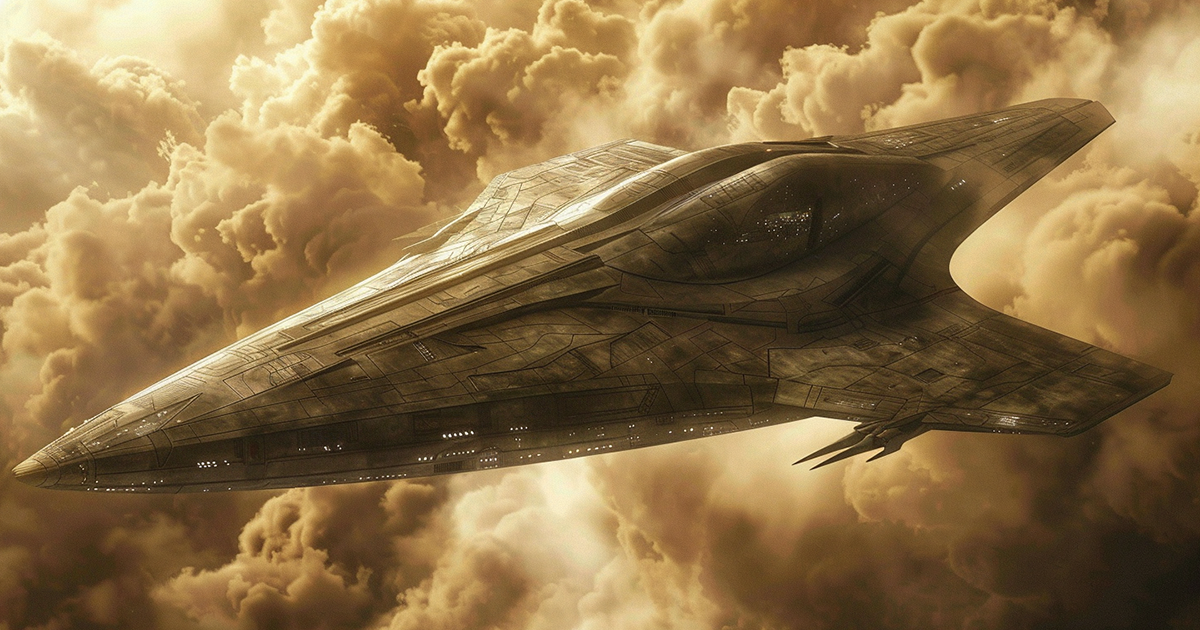Delving into the ancient Mesopotamian realm, the innovative Sumerians bequeathed a diverse heritage of art, literature, and revolutionary advancements. Their art, filled with intricate details and mysterious symbols, remains a fascination for scholars and enthusiasts alike. Recent attention has been drawn to depictions of peculiar flying entities in Sumerian art, reminiscent of contemporary spacecraft. Do these ancient artifacts offer evidence of advanced engineering or convey symbolic meanings?
Scenes of daily life, religious customs, and celestial occurrences are portrayed in Sumerian cylinder seals, clay tablets, and reliefs. Among these depictions are enigmatic objects resembling aircraft – cylindrical forms with wing-like extensions, often depicted alongside figures seemingly controlling or interacting with them.
Proponents of the theory of Sumerian aerial devices argue that the meticulousness and uniformity in these depictions suggest a grasp of aerodynamics ahead of their time. They highlight the consistency in representations across various artifacts and the presence of figures engaged in actions indicating technological proficiency.
Furthermore, advocates for this notion draw parallels between Sumerian art and accounts of flying apparatus in other ancient cultures. Similar motifs of aerial transportation in Hindu scriptures and Egyptian mythology raise queries about potential cultural exchanges or encounters with advanced technology.
 Insights into these mysterious artifacts are offered by ancient cuneiform tablets. Some narratives depict deities descending from the heavens in flying contraptions, suggesting symbolic and religious implications for the Sumerians. Deciphering these manuscripts necessitates comprehension of the cultural and spiritual beliefs of that era, along with the allegorical language typical in antiquated texts.
Insights into these mysterious artifacts are offered by ancient cuneiform tablets. Some narratives depict deities descending from the heavens in flying contraptions, suggesting symbolic and religious implications for the Sumerians. Deciphering these manuscripts necessitates comprehension of the cultural and spiritual beliefs of that era, along with the allegorical language typical in antiquated texts.
Conversely, skeptics propose alternative interpretations of Sumerian art, proposing that the airborne entities may symbolize abstract or mythical concepts rather than tangible machinery. They contend that ancient art often conveyed symbolic or religious notions, with the flying devices embodying allegories for divine entities or cosmic phenomena.
Critics also note the absence of physical evidence corroborating the existence of ancient aerial vehicles, such as remnants or technological artifacts. While the depictions in Sumerian art are intriguing, it is cautioned to refrain from drawing definitive conclusions without substantial collaborative evidence.
Another perspective posits that these airborne entities symbolize spiritual or cosmic odysseys rather than physical transit. In Sumerian mythology, deities frequently voyaged through the skies in celestial chariots, symbolizing their transcendence beyond earthly boundaries. Thus, the celestial figures in Sumerian art could represent allegories for spiritual enlightenment or the pursuit of celestial wisdom.
In summary, the interpretation of Sumerian art portraying mysterious flying entities remains a topic of debate and conjecture among scholars and enthusiasts. While some discern vestiges of ancient aircraft and technological aptitude, others perceive these artifacts as symbolic reflections of cultural, spiritual, or cosmic phenomena. As we persist in exploring and scrutinizing these ancient remnants, one certainty prevails – the enigmatic charm of Sumerian creativity endures, beckoning us to probe the enigmas of the past, contemplating the boundless realms of human imagination.
